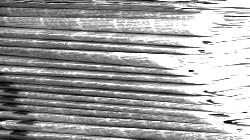Marcia's Fast Free Course in Media Publicity
The article below is the third
of seven articles that give you a quick,
well-rounded introduction to the fundamentals of
getting media coverage for yourself, your book,
your business or your cause. After reading
this piece, click on "NEXT" to
read the next article in the series. START
AT THE BEGINNING.
Using Third-Party Research as a Publicity
Handle: Potential and Pitfalls
by Marcia Yudkin
Atop a fresh pad of personalized checks, this bold statement caught my eye: "Checks are TWICE AS SAFE as Credit or Debit Card Purchases." Wow, I thought - a strong motivator for folks to favor checks, shrewdly deployed to fatten the coffers of check printers.
|
This got me thinking about using third-party research as part of a publicity angle. A coffeehouse could quote studies on espresso increasing brain power; a plastic surgeon could refer to psychologists' findings that attractive people make more money. Valid moves, these, and it's legitimate to piggyback on other people's research so long as you add your organization's information and comments to the data.
Having written for magazines countless times in
the last two decades, I followed my habit and
began tracking down and checking the source of
the "twice as safe" citation.
|
 |
Unfortunately, nowhere in the report referred to was that compelling statistic to be found. Nor did the report contain separate facts that could be readily combined for that conclusion. Worse, where the report did discuss the safety of checks versus credit and debit cards, it referred to losses for merchants, not for those writing the checks.
Thinking that I'd overlooked some chart or footnote, I emailed the editor of the journal that had released the report supposedly containing the "twice as safe" data. She confirmed that it wasn't in there, and nor was it something that could be calculated from any two other facts in the report. So, sloppy thinking and an overeager publicity writer trying to bolster the credibility of check printers had achieved exactly the opposite with me.
|
Become a Paid
Freelance Writer - Start Today!
If you have a lust for publicity, you
might as well learn to get paid for your
content. Master freelance article writing by completing nine article idea
generation and writing assignments and
receiving feedback from a
Book-of-the-Month Club author who has
published in the New York Times
Magazine, Business 2.0, Psychology
Today, USAirways, TWA Ambassador and
many other top publications. Magazine
writing course for beginners. |
I'm not the only journalist who habitually seeks confirmation of a fact before printing it. On the contrary, better magazines all have at least one staff member whose job title is Fact Checker. Therefore, before using a fact you've read or heard somewhere in your press release, track that fact to its source or find independent confirmation of a statistic. Reference librarians are skilled in doing this, and will often help you with this sort of search for free.
Hang on to the source when you find it, because a reporter, editor or magazine fact checker might ask you for it in the process of developing an article from your press release.
Keep in mind that a reference in a best-selling business book doesn't prove that a "fact" is real. For many years, Fast Company magazine devoted a column called the Consulting Debunking Unit to demonstrating that catchy gimmicks like the "hundredth monkey" story, the alleged impossibility of herding cats, advice to "fish where the fish are" and such were metaphors or myths rather than actuality. The column lampooned those who repeated such stories as if they were science.
Citing research can indeed impress readers and serve as a publicity hook. Include the source, as the check printer did
- usually in the form of "according to..." Make certain your references will withstand critical scrutiny, however!
Copyright 2003 Marcia Yudkin.
All rights reserved. NEXT
ARTICLE.
Online Courses Related to Publicity
Deep Publicity
The Press Release Makeover Course
Marketing for Introverts
Create a Practical Marketing and Publicity Plan |






